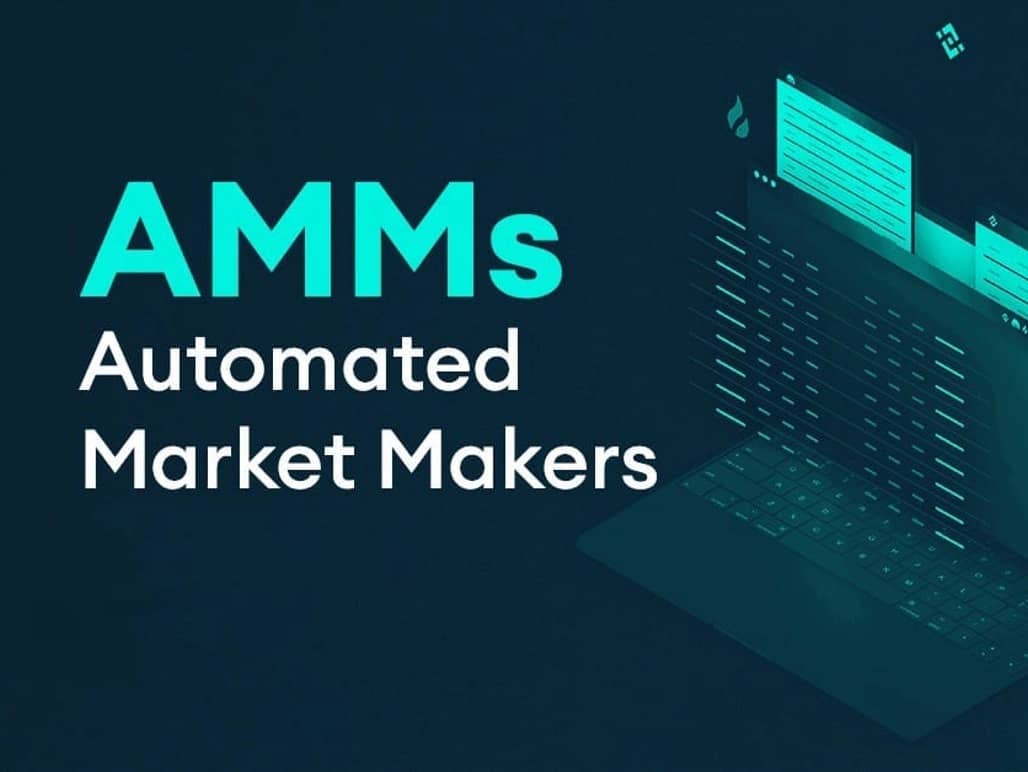Subscribe to wiki
Share wiki
Bookmark
Automated Market Maker (AMM)
The Agent Tokenization Platform (ATP):Build autonomous agents with the Agent Development Kit (ADK)
Automated Market Maker (AMM)
An automated market maker (AMM) is a type of decentralized exchange (DEX) protocol that relies on a mathematical formula to price assets. Instead of using an order book like a traditional exchange, assets are priced according to a pricing algorithm. [1][10]
Introduction
Because AMMs are built on blockchains and utilize smart contracts, trades can be conducted at any time, in a permissionless way, and for much lower fees than on a traditional exchange. When someone wants to buy or sell an asset on a decentralized exchange, they simply submit the trade to the smart contract and it’ll be automatically executed at whatever the current market price is. [10]
There are two main types of automated market makers (AMMs). While one may be governed and set up by professional market makers, the other is fully automated by a set algorithm, allowing any user in the market to participate by depositing liquidity into the smart contract. [3]
Automated Market Makers Technology
On traditional exchanges, buyers and sellers negotiate prices from individual reserves or market makers, using a central limit order book. Automated Market Makers (AMMs) take a different approach. AMMs gather liquidity from various users in a shared pool, known as a liquidity pool. [11]
Users contribute equal amounts of multiple tokens to this pool through a smart contract. AMMs, prevalent in DeFi, often use a "constant product market maker" formula to maintain token prices in these pools. Joining a liquidity pool is accessible to anyone with a self-custody wallet and compatible tokens. Participants earn a share of trading fees by locking their tokens in the pool, proportional to their contribution. [11]
Liquidity Pools
Liquidity pools are a crowdsourced collection of crypto assets that the AMM uses to trade with people buying or selling one of these assets. The users that deposit their assets to the pools are known as liquidity providers (LPs). [10][12]
Liquidity is essential for AMMs to function properly. If an AMM doesn’t have a sufficient liquidity pool, it can create a large price impact when traders buy and sell assets on the DeFi AMM, leading to capital inefficiency and impermanent loss. To incentivize liquidity providers to deposit their crypto assets to the protocol, AMMs reward them with a fraction of the fees generated on the AMM, usually distributed as LP tokens. The practice of depositing assets to earn rewards is known as yield farming. [12]
Popular AMMs
Kyber Network
Kyber Network is a liquidity aggregator that connects to various AMMs and DEXs. It aims to provide users with the best available rates by sourcing liquidity from multiple platforms. In early 2018, the Kyber Network was one of the first AMMs to introduce automated liquidity pools to the crypto ecosystem[8].
Uniswap
Uniswap is one of the pioneering and widely used decentralized exchanges (DEX) powered by AMM technology. Developed by Hayden Adams, it operates on the Ethereum blockchain and allows users to trade various ERC-20 tokens directly from their wallets. [7]
Balancer
Balancer is an automated portfolio manager and AMM platform on Ethereum. It enables users to create liquidity pools with multiple tokens and varying weights, allowing for dynamic asset allocation. [5]
Curve
Curve Finance is a decentralized exchange optimized for stablecoin trading on Ethereum. It aims to provide low-slippage trades for stablecoin pairs by using a specialized bonding curve. [2]
PancakeSwap (CAKE)
PancakeSwap is a decentralized exchange running on the Binance Smart Chain (BSC). It mirrors the functionalities of Uniswap but operates on the BSC, offering users lower transaction fees compared to Ethereum. [2]
SushiSwap (SUSHI)
SushiSwap is a decentralized exchange and AMM platform built on the Ethereum blockchain. It offers features similar to Uniswap but includes additional functionalities such as yield farming and staking. [2]
Uses of AMMs
As a blockchain-based innovation, Automated Market Makers (AMMs) facilitate decentralized and trustless trading without the need for intermediaries. Users benefit from an experience without sign-up requirements, the need to disclose sensitive information, or reliance on a third party for fund custody—only a self-custody wallet is necessary. [11]
AMMs provide traders with convenient access to a wide array of trading pairs not found on traditional exchanges. Additionally, liquidity pools associated with AMMs enable the simultaneous trading of multiple assets, allowing for the execution of more complex trading strategies. The algorithmic setting of asset prices in AMMs mitigates pricing risks typically associated with centralized exchanges, such as frontrunning asset releases. [11]
Also, the open-source nature of AMMs allows for their integration into various DeFi protocols, including lending and borrowing, contributing to the adaptability and versatility of these decentralized trading mechanisms. [3][11]
See something wrong?
The Agent Tokenization Platform (ATP):Build autonomous agents with the Agent Development Kit (ADK)
